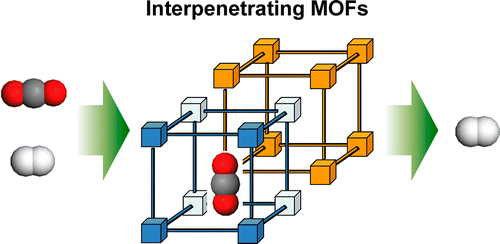Interpenetration of Metal Organic Frameworks for Carbon Dioxide Capture and Hydrogen Purification: Good or Bad?
슈퍼관리자
2021-05-21
Interpenetration of Metal Organic Frameworks for Carbon Dioxide Capture and Hydrogen Purification: Good or Bad?
-
Authors :
S. S. Han, D. H. Jung, and J. Heo
-
Journal :
Journal of Physical Chemistry C
-
Vol :
117
-
Page :
71-77
-
Year :
2013

Abstract
Using grand canonical Monte Carlo (GCMC) simulations with our recently developed first-principles-based force fields, we report the effects of porosity and interpenetration on the CO2 uptake in 14 prototypical MOFs (metal organic frameworks). The maximum CO2 capacity for both total and excess uptakes at high pressures (e.g., 50 bar) correlates well with the pore volume of MOFs and zeolitic imidazolate frameworks, rather than the surface area, which agrees well with the experimental results. The interpenetration between MOFs leads to smaller pore volume (higher density) lowering the maximum CO2 uptake at high pressures. However, the interpenetrating MOFs produce new CO2 adsorption sites with high binding affinity (approximately twice that of noninterpenetrating MOFs), such as shared spaces created by two organic linkers of adjacent MOFs, enhancing CO2 uptake at low pressures (e.g., 2 bar). For H2 uptake at 298 K, on the other hand, the interpenetration does not provide positive effects. For these reasons, the interpenetration of MOFs remarkably enhances the selectivity of CO2 over H2, by more than 3 times that of noninterpenetrating MOFs. These results also show that smaller pores in MOFs are, indeed, advantageous for the CO2/H2 separation.















